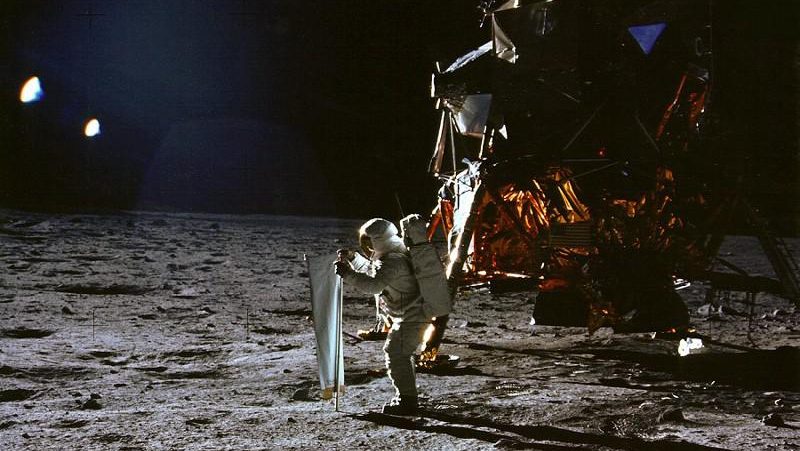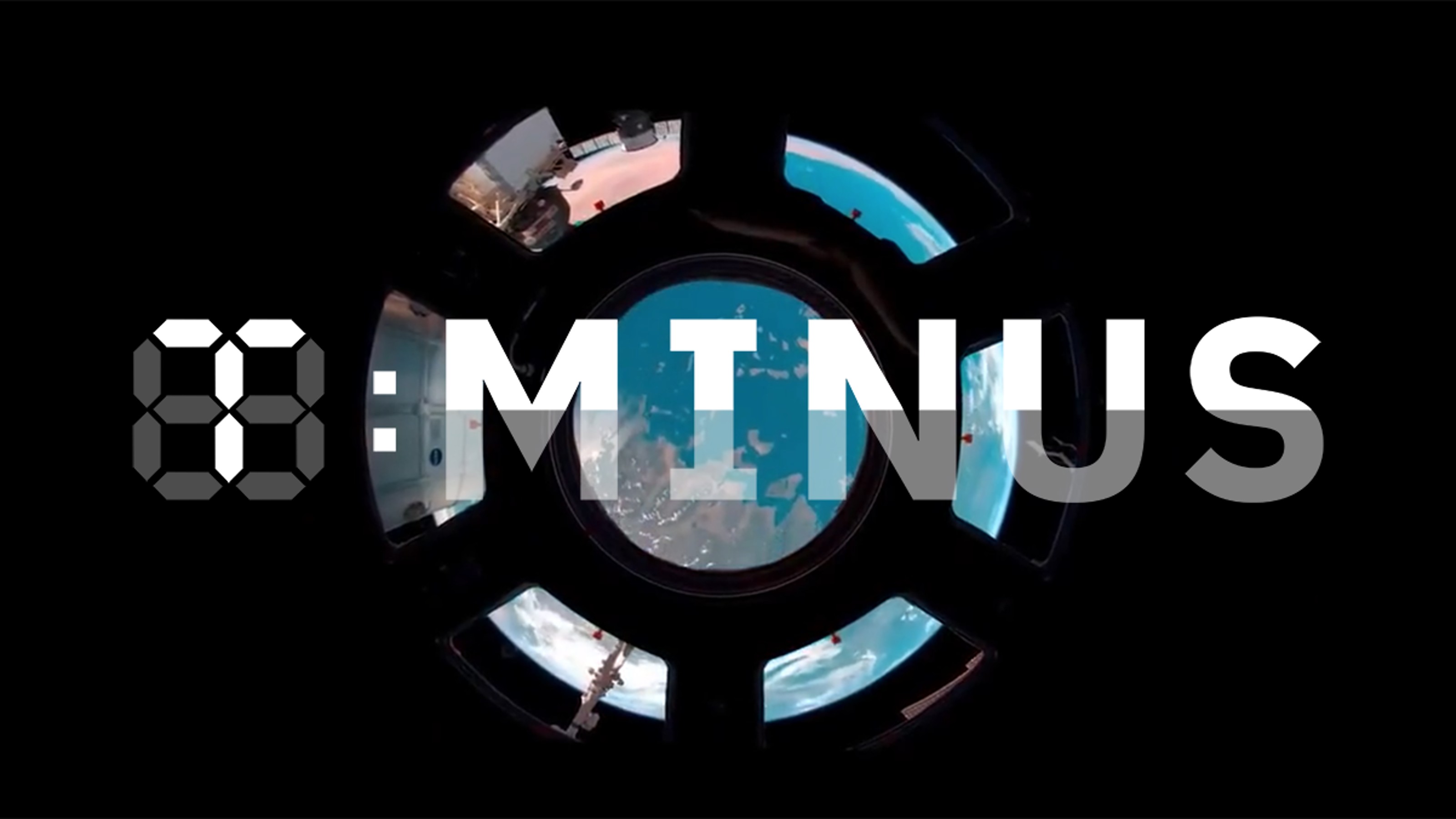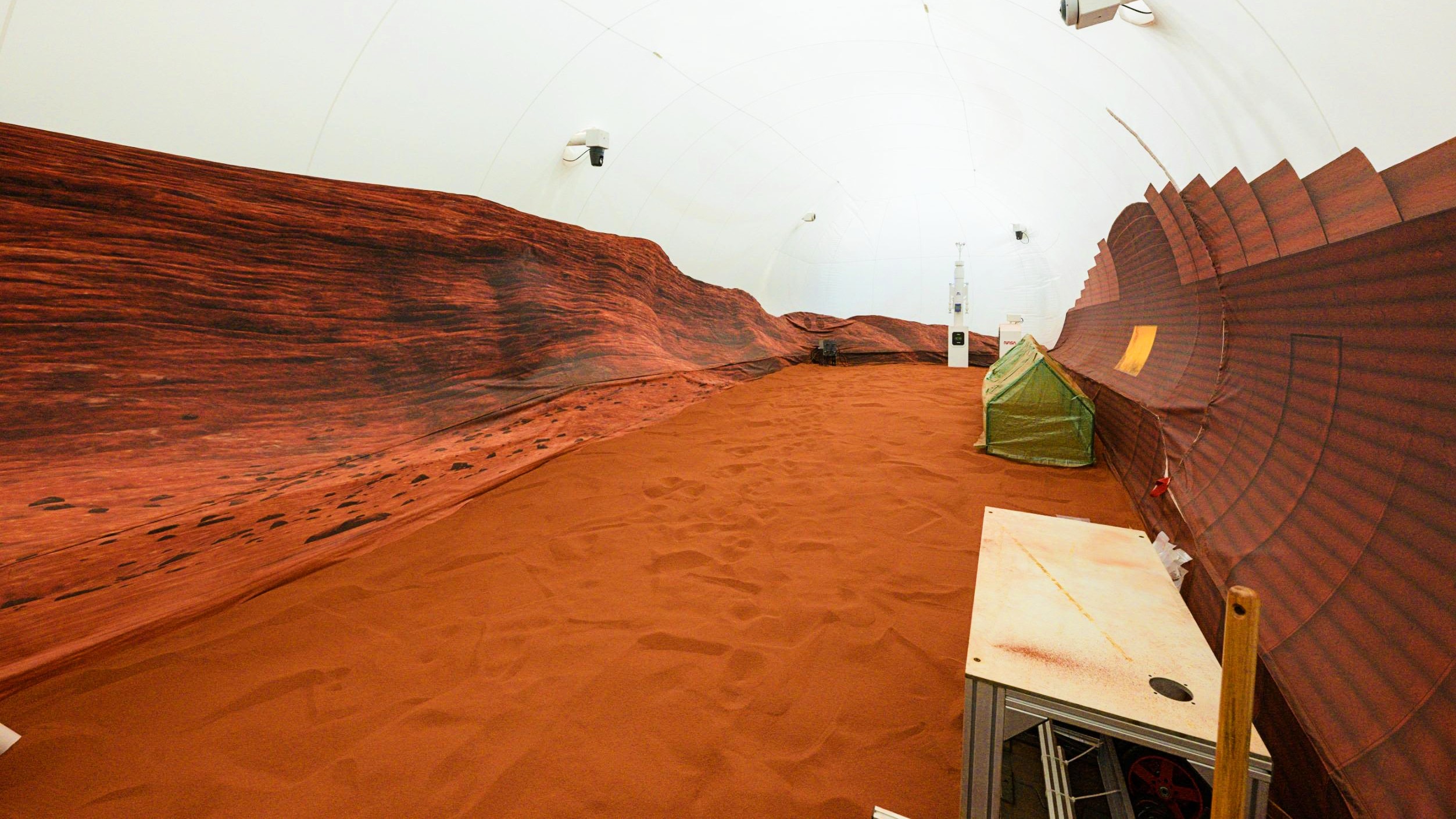Everyone Missed An Apollo 11 Mistake, And It Almost Killed The Astronauts Returning To Earth
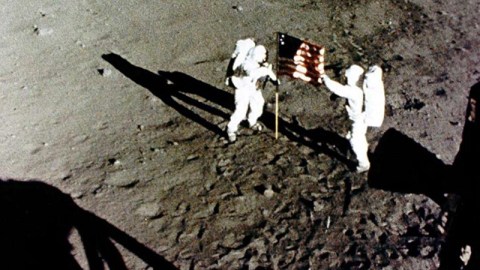
Even with the best preparation imaginable, sometimes you have to get lucky, too.
Even from our perspective in 2019, 50 years later, humanity’s achievements from July, 1969, still mark the pinnacle of crewed spaceflight. For the first time in history, human beings successfully landed on the surface of another world. After a 380,000 km journey, the crew set foot on the Moon, walked upon it, installed scientific instruments, took samples, and then departed for Earth.
Three days after leaving the Moon, on July 24, 1969, they splashed down in Earth’s oceans, successfully completing their return trip. But during Apollo 11’s return to Earth, a serious anomaly occurred: one that went undetected until after the crew returned to Earth. Uncovered by Nancy Atkinson in her new book, Eight Years to the Moon, this anomaly could have led to a disastrous ending for astronauts Armstrong, Aldrin and Collins. Here’s the story you’ve never heard.
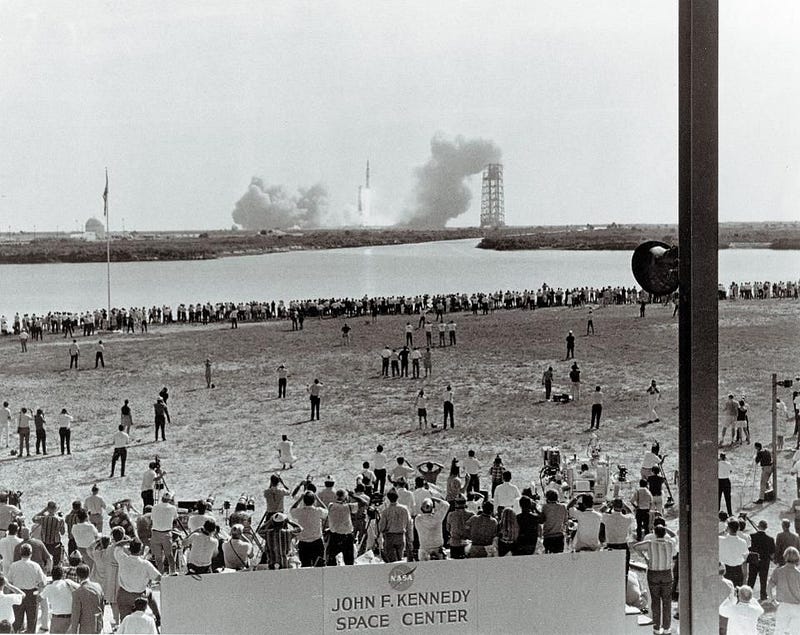
According to our records, the flight plan of Apollo 11 went off without a hitch. Chosen as the mission to fulfill then-President Kennedy’s goal of performing a crewed lunar landing and successful return to Earth, the timeline appeared to go exactly as planned.
- On July 16, 1969, the Saturn V rocket responsible for propelling Apollo 11 to the Moon successfully launched from Cape Kennedy. (Modern-day Cape Canaveral.)
- Only July 17, the first thrust maneuver using Apollo’s Service Propulsion System (SPS) was made, course-correcting for the journey to the Moon. The launch and this one corrective burn were so successful that the other three scheduled SPS maneuvers were not even needed.
- Only July 19, Apollo 11 reached the Moon, flying behind it and entering lunar orbit after a series of thrust maneuvers from SPS.
- On July 20, the Eagle (lunar module) undocked from the Columbia (command and service module), made a powered descent, and landed on the Moon’s surface.
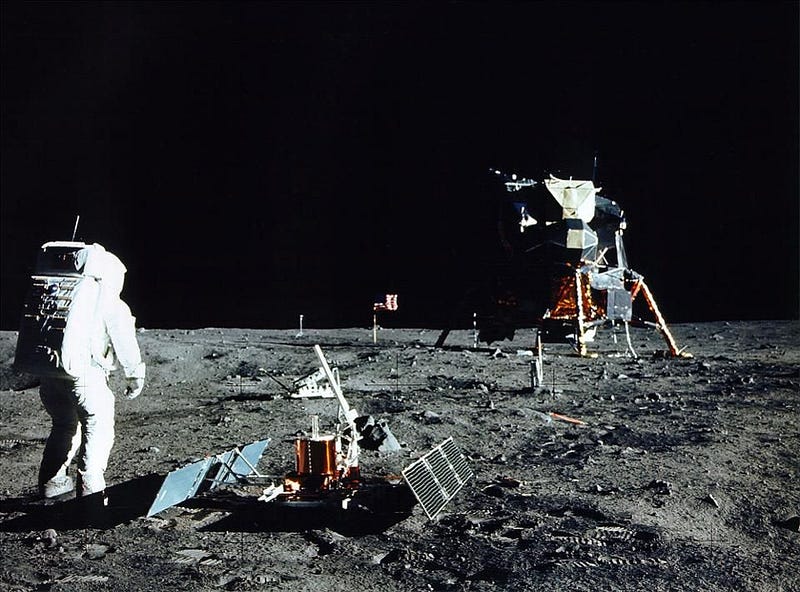
- After 4 hours setting up, astronauts Armstrong and Aldrin left the lunar module to explore the lunar surface, performing an extra-vehicular activity (EVA) for a total of 2.5 hours, deploying scientific instruments, collecting samples for return, and famously planting an American flag.
- On July 21, after just 21 hours and 36 minutes on the Moon, the ascent engine fired, bringing the Eagle back to dock with Columbia, and returning astronauts Aldrin and Armstrong to the Command and Service Module with astronaut Collins.
- On July 21, the SPS thrusters fired, returning the Command and Service Module to Earth, with the lone mid-course correction coming on July 22.
- And on July 24, re-entry procedures were initiated, returning the Apollo 11 crew to a safe splashdown in the Pacific Ocean.
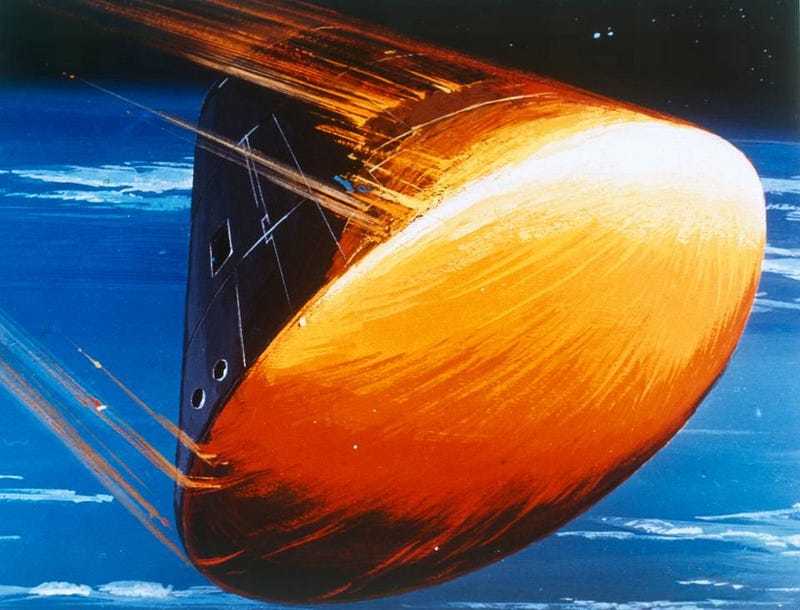
It all sounds so simple and straightforward, which obscures the real truth: for every one of these steps, there were hundreds (or more) potential points of failure that everyone involved needed to guard against. That final step alone, which returned the astronauts from their presence around to Moon — after journeying back to Earth — was one of the most crucial. If it failed, it would lead to certain death, similar to the demise of the Soviet cosmonaut Vladimir Komarov.
Successful re-entries after a journey to the Moon had already taken place aboard NASA’s Apollo 8 and Apollo 10 missions, and Apollo 11 was expected to follow the same procedures. At the danger of becoming complacent, this step, in many ways, already seemed like old hat to many of those staffing the Apollo 11 mission.
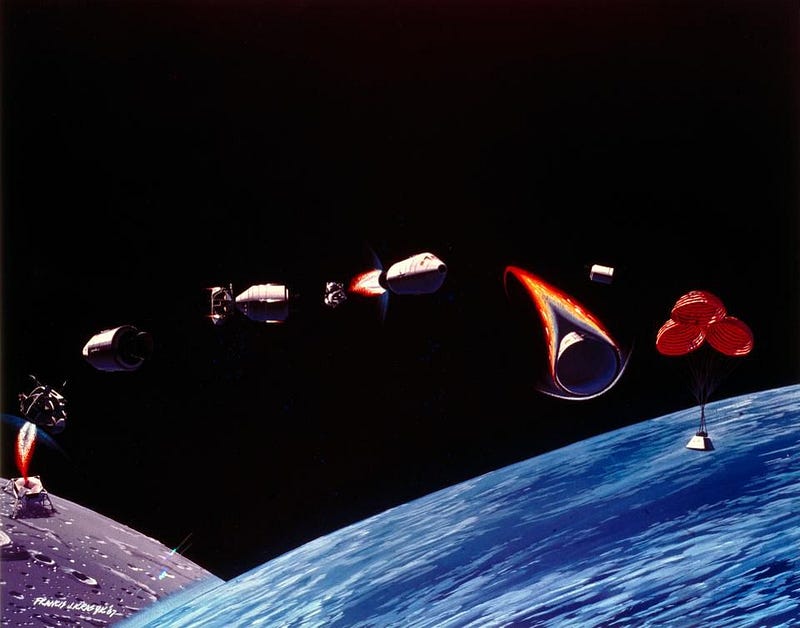
Re-entry, in principle, ought to be straightforward for the astronauts returning from the Moon. The Command and Service Modules first needed to separate, with the astronauts inside the Command Module and the Service Module being jettisoned. Once safely away, the Command Module would re-orient itself so that the heat shield was in the forward-facing position, prepared to absorb the brunt of the impact of re-entering Earth’s atmosphere while protecting the astronauts inside.
At the proper moment, when the atmospheric density was great enough and the external temperatures and speeds were low enough, the parachute would deploy, leading to a gentle splashdown in the Pacific Ocean approximately 5 minutes later, where the astronauts could then be safely recovered.
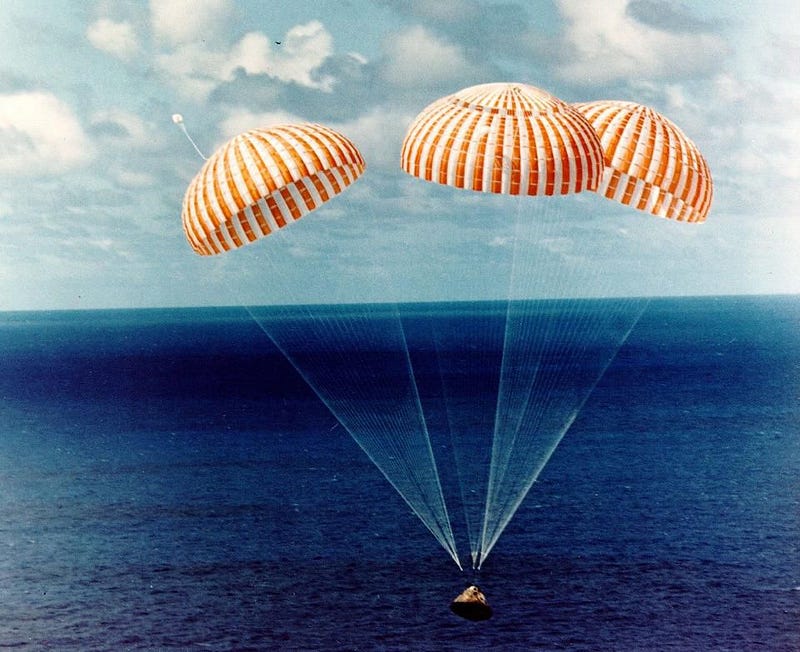
It sounds so routine. But of the innumerable things that could go wrong, one of them was entirely unexpected: the possibility that the Service Module, scheduled to break apart and safely burn up in Earth’s atmosphere, could accidentally have a piece of its debris collide with the Command Module, ruining re-entry and killing the returning astronauts on board.
The plan to avoid it was simple: the Service Module, post-separation, would perform a series of thrust maneuvers to take it safely away from the re-entry path of the Command Module. By shifting the Service Module to a significantly different trajectory, it wouldn’t even re-enter at the same time as the Command Module, but would skip off the atmosphere this time. The re-entry of the Service Module should have only come much later, after performing another orbit (or set of orbits) around Earth.
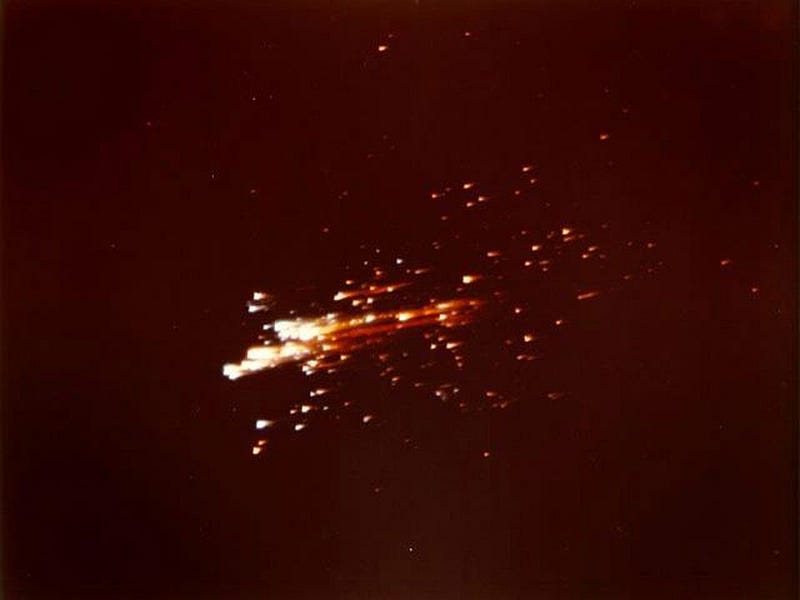
But that didn’t happen at all. To quote from Nancy Atkinson’s book, pilot Frank A. Brown, flying about 450 miles (725 km) away from the re-entry point, reported the following:
I see the two of them, one above the other. One is the Command Module; the other is the Service Module. . . . I see the trail behind them — what a spectacle! You can see the bits flying off. Notice that the top one is almost unchanged while the bottom one is shattering into pieces. That is the disintegrating Service Module.
Fortunately for everyone, none of the debris resulting from the Service Module’s re-entry impacted the Command Module, and the astronauts all arrived safely back on Earth.
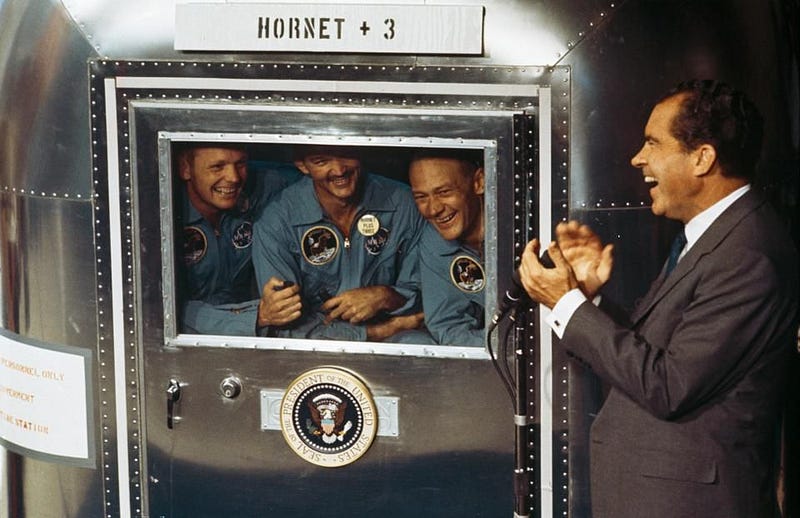
How could this have occurred?
There was a fault in how the Service Module was configured to jettison its remaining fuel: a problem that was later discovered to have occurred aboard the prior Apollo 8 and Apollo 10 missions as well. Instead of a series of thrusters firing to move the Service Module away from the Command Module, shifting it to a different trajectory and eliminating the possibility of a collision, the way the thrusters actually fired put the entire mission at risk.
The problem was that there were two types of thrusters on board the Service Module: the Minus X RCS jets and the RCS roll jets. And while the roll jets fired in bursts in an attempt to stabilize the Service Module, the Minus X jets fired continuously.
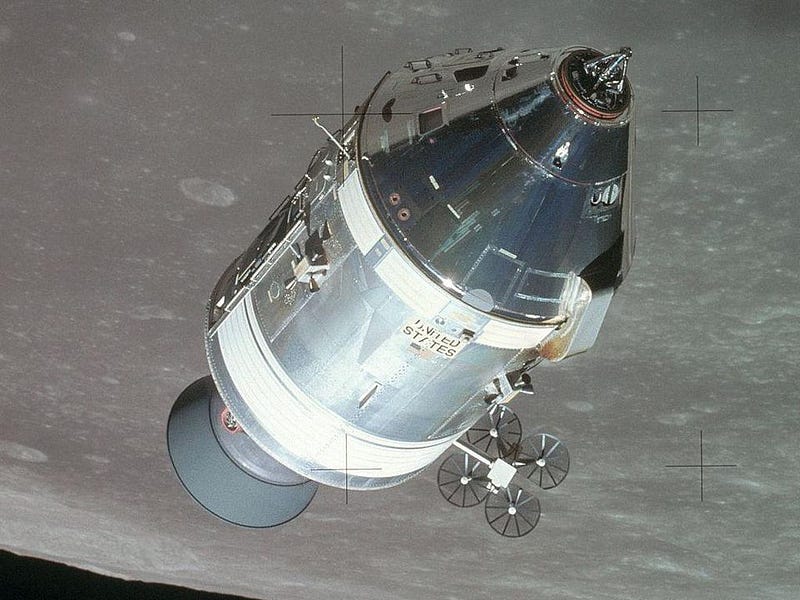
In the aftermath of Apollo 11, investigators determined that the proper procedure for avoiding contact would be to properly time the firing of both the roll jets and the Minus X jets, which would lead to a 0% probability of contact between the two spacecrafts. This might seem like an extremely small point — to have the Minus X jets cut out after a certain amount of time firing as well as the roll jets — but you must remember that the spacecraft is full of moving parts.
If, for example, the fuel were to slosh around after the Service Module and the Command Module separated, that could lead to a certain window of uncertainty in the resultant trajectory. Without implementing the correct procedure for firing the various jets implemented, the safe return of the Apollo 11 astronauts would have to come down to luck.
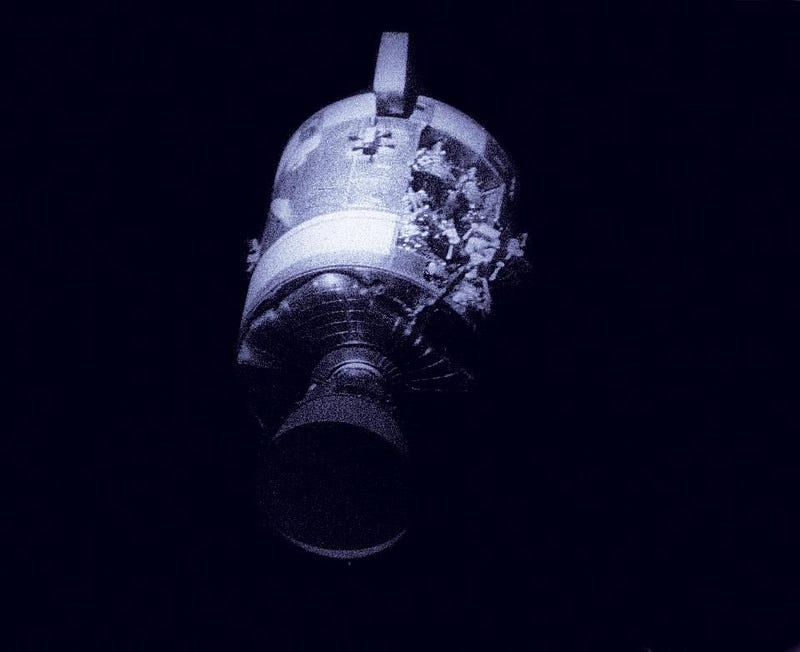
Fortunately for everyone, they did get lucky. During the technical debriefing in the aftermath of Apollo 11, the fly-by of the Service Module past the Command Module was noted by Buzz Aldrin, who also reported on the Service Module’s rotation, which was far in excess of the design parameters. Engineer Gary Johnson hand-drew schematics for rewiring the Apollo Service Module’s jettison controller, and the changes were made just after the next flight: Apollo 12.
Those first four crewed trips to the Moon — Apollo 8, 10, 11 and 12 — could have all ended in potential disaster. If the Service Module had collided with the Command Module, a re-entry disaster similar to Space Shuttle Columbia could have occurred just as the USA was taking the conclusive steps of the Space Race.
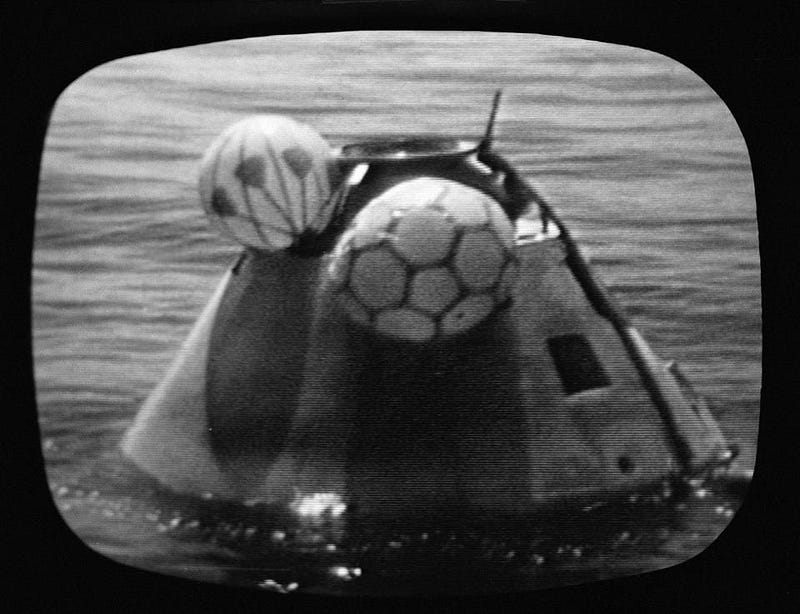
Atkinson’s book, Eight Years to the Moon, comes highly recommended by me if you’re interested in the behind-the-scenes details and rarely-told stories from the Apollo era. Inside, you’ll find many additional details about this event, including interview snippets with Gary Johnson himself.
If Armstrong and Aldrin — the first two moonwalkers — were to perish before returning to Earth, the United States already had a presidential address drafted for such a purpose. We may chalk it up to good fortune that the following words never needed to be spoken:
In their exploration, they stirred the people of the world to feel as one; in their sacrifice, they bind more tightly the brotherhood of man.
In ancient days, men looked at the stars and saw their heroes in the constellations. In modern times, we do much the same, but our heroes are epic men of flesh and blood.
Others will follow, and surely find their way home. Man’s search will not be denied. But these men were the first, and they will remain the foremost in our hearts.
Ethan Siegel is the author of Beyond the Galaxy and Treknology. You can pre-order his third book, currently in development: the Encyclopaedia Cosmologica.

